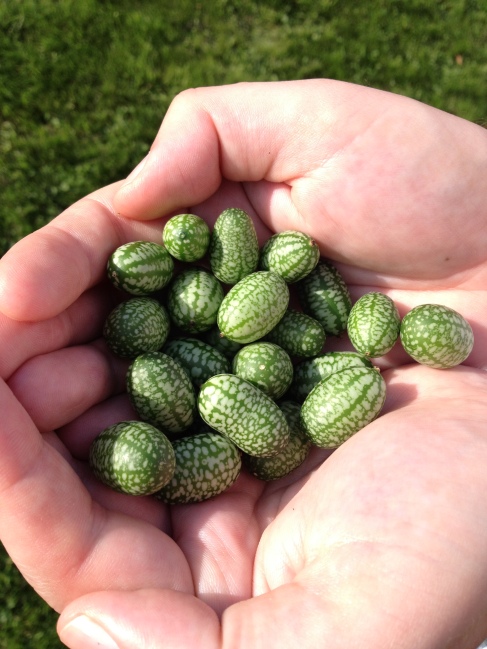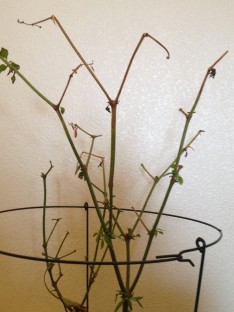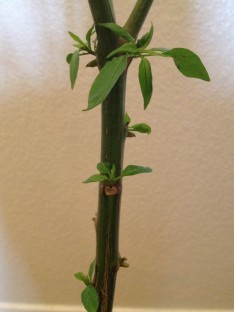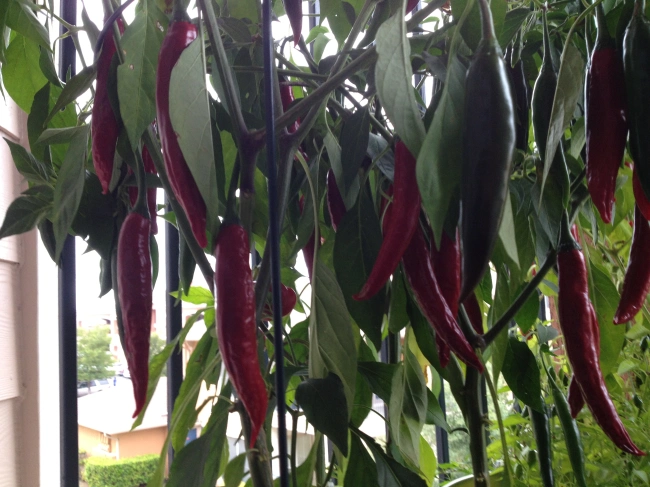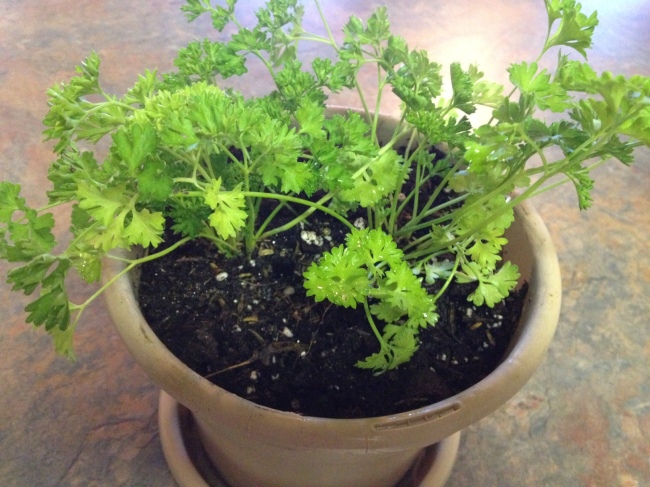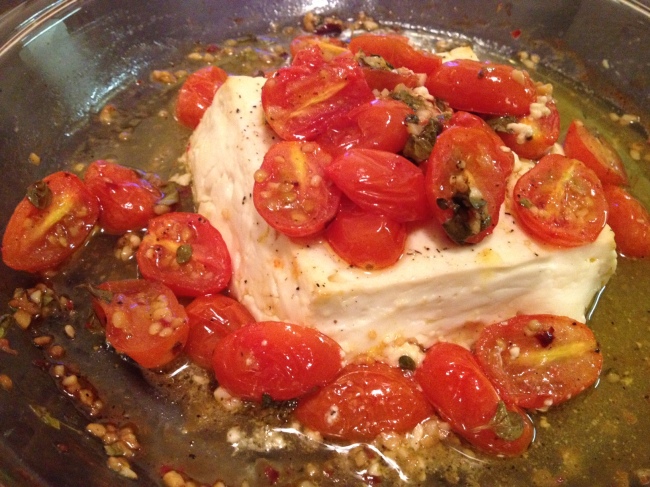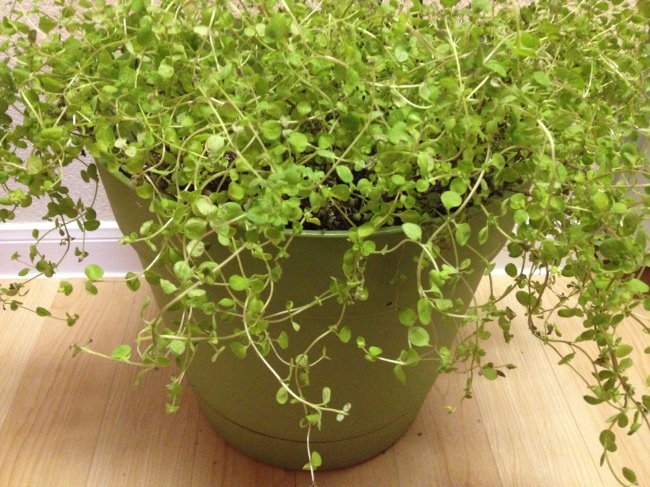Cucamelons go by many names: mouse melon, Mexican mini-watermelons, Mexican sour gherkin, etc., but I just like to call them the cutest darn fruit you ever did see. I just ordered my seeds online and I can’t wait to get them into the ground (well, container of dirt). They’re tiny cucumbers that look like watermelons and taste like cucumber with a hint of citrus flavor. They are extremely easy to grow and the plant itself is also beautiful with long curling vines and cute little yellow blossoms.
We loved growing these because they’re constantly changing and make a lot of produce with a little effort. Also, I find it so much more rewarding to grow things that I can’t easily find in grocery stores.
Growing Tips:
The seeds are easiest to find online, which is where I bought mine. Plant the seeds about 4 inches apart in potting soil about ½ deep in either a hanging pot or along a trellis or cage. These seeds are notoriously slow to germinate so don’t give up hope if nothing seems to happen for about a month. Once they break through the soil, they shoot up quickly and start to change and grow every day. They prefer full sun but can handle some shade. In the hot days of summer, you may need to water every couple of days, though these plants are known to grow wild with no tending so they don’t need a lot of constant nurturing. This made them a great pick for novice edible gardeners like us. The cucamelons are ready to harvest when rounded on each end and about the size of a small grape. They will grow along the ground or can train up any kind of trellis. We used this old tomato cage for our cucamelons last year, but plan to grown them out of a hanging planter this year so the pretty curly tendrils and flowers hang down.
Serving Suggestions:
These are great right off the vine but would also be excellent tossed in salads or served as a side dish tossed with olive oil, salt, and any other fresh vegetables. They also make adorable little pickles. You can find a recipe for pickled cucamelons at our fellow edible home farmer’s blog here: http://thepotlicker.com/2013/09/13/lemon-pickled-mouse-melons/
My favorite serving suggestion is to serve them at a cocktail party in drinks in place of olives for a unique garnish. So cute!

